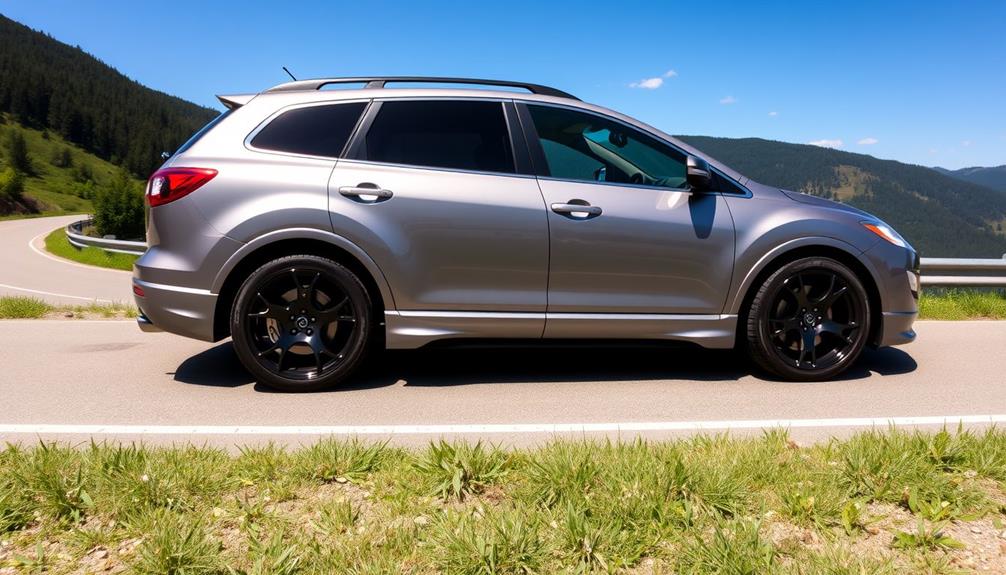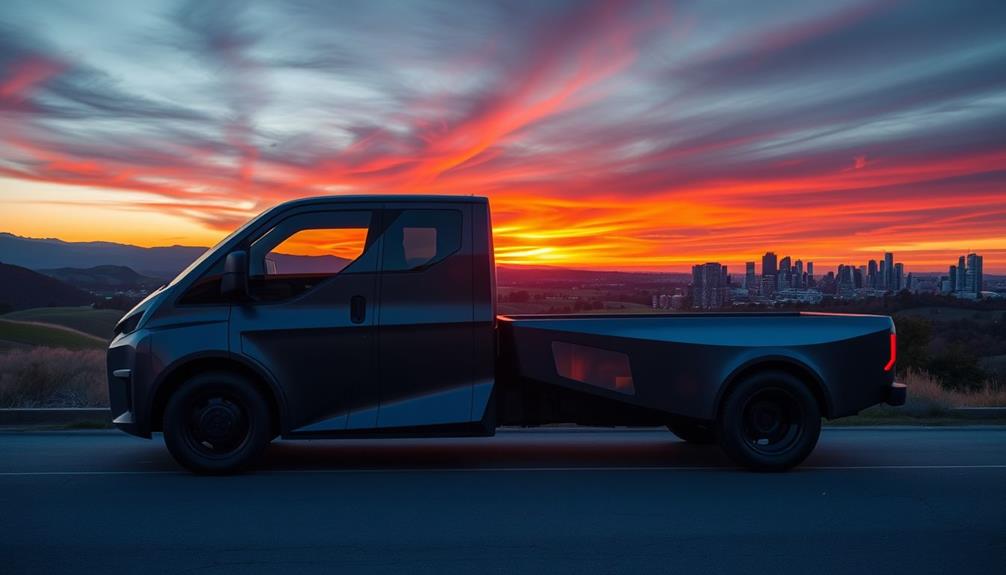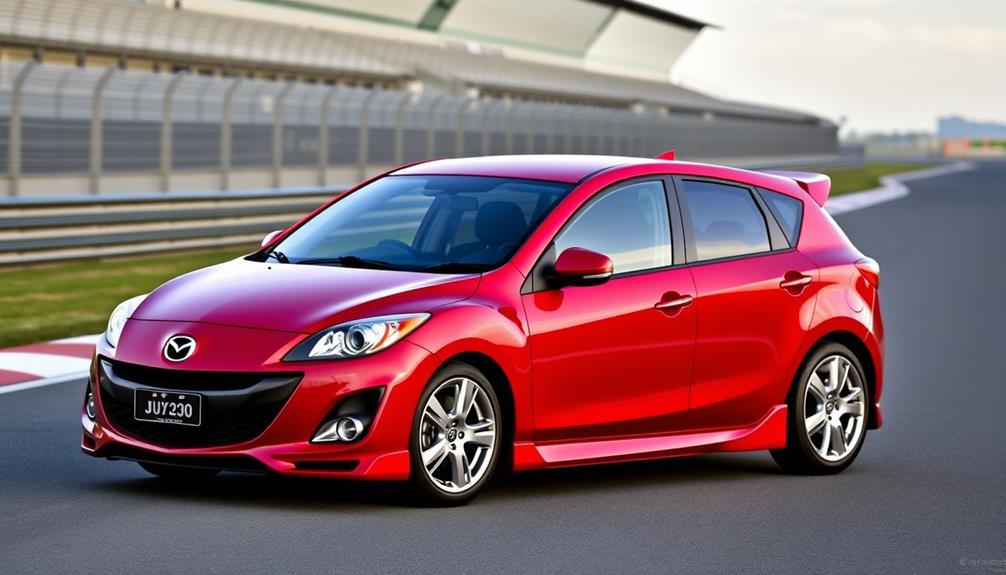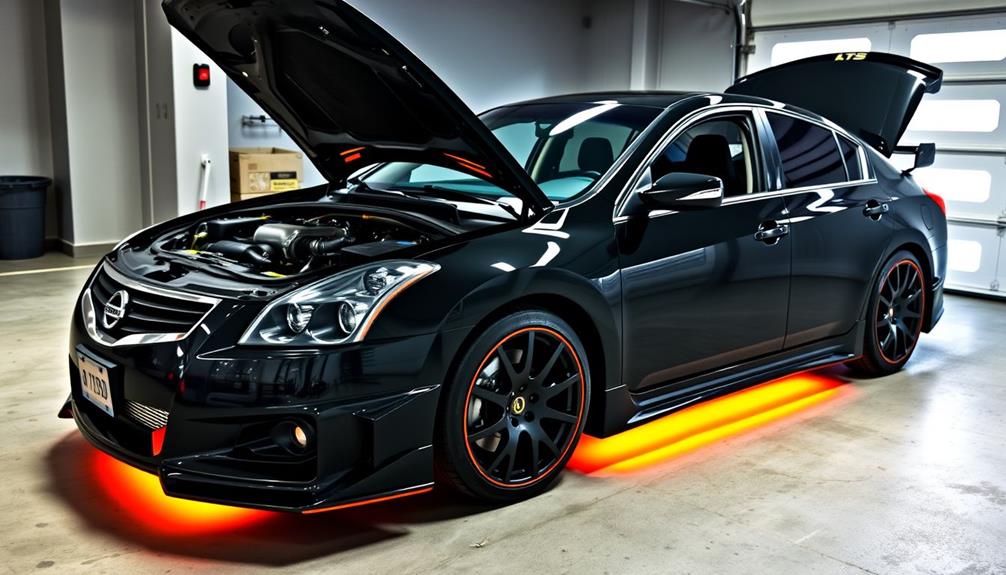Tuning your 2008 Mazda CX-9 can really amp up its power and efficiency. By upgrading components like the cat-back exhaust system and K&N air intake, you could see a boost of 10-30% in horsepower and torque. ECU tuning also adds more power, while ethanol-free fuel might enhance your MPG by around 0.5. Regular maintenance, like oil changes and fluid checks, helps keep your SUV running smoothly. These tweaks not only improve performance but guarantee a longer engine lifespan too. Explore further to uncover the best modifications for your CX-9 and maximize its potential.
Key Takeaways
- Tuning the 2008 Mazda CX-9 can increase horsepower and torque by 10-30% with modifications like ECU tuning and cat-back exhaust systems.
- Installing a K&N air intake improves engine efficiency and air filtration, leading to better performance and fuel economy.
- Regular maintenance, such as oil changes and fluid checks, is crucial for maximizing performance and preventing engine issues.
- Using ethanol-free 91 octane fuel can enhance power and fuel efficiency, providing potential savings over time.
- Community feedback supports cat-back exhausts and air intakes as effective upgrades for improving the CX-9's performance.
Overview of the 2008 Mazda CX-9
Driving the 2008 Mazda CX-9 offers a blend of power and practicality, thanks to its impressive 3.7-liter V6 engine that delivers 273 horsepower. This robust engine generates 270 lb-ft of torque, ensuring you have the performance needed for daily driving or weekend adventures.
The six-speed automatic transmission enhances your experience, providing smooth shifts whether you're maneuvering city streets or cruising on the highway.
When you opt for the CX-9 Grand Touring, you're not just getting power; you're also enjoying versatility. Available in both front-wheel and all-wheel drive configurations, this SUV adapts to various driving conditions.
Plus, with a towing capacity of up to 3,500 pounds (with the optional towing package), you can easily haul light trailers or equipment.
Fuel economy remains reasonable for its class, with an EPA rating of 16 mpg in the city and 22 mpg on the highway for front-wheel drive models.
Inside, spacious seating for up to seven passengers and ample cargo space—17.2 cubic feet behind the third row, expandable to 100.7 cubic feet—make the CX-9 a practical choice for families or those needing extra room.
Benefits of Tuning Your SUV

Tuning your 2008 Mazda CX-9 can considerably enhance its performance, making your driving experience more enjoyable and efficient. By engaging in performance tuning, you can potentially achieve power increases of 10-30%. Modifications like ECU tuning and a cat-back exhaust system not only boost horsepower and torque but also improve exhaust flow without breaking the bank.
Moreover, installing a K&N style air intake enhances both air filtration and intake efficiency, leading to better engine performance and fuel efficiency. Many users report improvements in MPG of 3-6+ after tuning, depending on driving habits. This means you can enjoy a more powerful ride while saving money at the pump.
Regular tuning and maintenance further guarantee that your engine operates smoothly and efficiently, reducing the likelihood of major repairs down the line. As a result, you're not just enhancing performance; you're also promoting the longevity of your vehicle.
With these benefits, it's clear that tuning your CX-9 can transform your full-size SUV into a more dynamic and economical machine, making every drive more satisfying.
Recommended Performance Modifications

Upgrading your 2008 Mazda CX-9 with performance modifications can take your driving experience to the next level.
One of the most effective upgrades is a cat-back exhaust system, which enhances exhaust flow and could boost horsepower and torque without breaking the bank. Additionally, installing a K&N style air intake improves air filtration and intake efficiency, potentially leading to improved performance and fuel economy during everyday driving.
If you're looking for a more significant power increase, consider a turbocharger installation. This modification is known to dramatically enhance horsepower, making it a worthwhile investment for those craving extra power.
Pairing this with ECU tuning and downpipe modifications can yield around 10 additional horsepower, further enhancing your turbo engine's performance.
Community Feedback and Experiences

While many owners of the 2008 Mazda CX-9 have shared their experiences with performance modifications, the community's insights often highlight the effectiveness of specific upgrades.
You'll find that many enthusiasts recommend cat-back exhaust systems and K&N style air intakes, which reportedly boost horsepower and torque without breaking the bank. However, there's skepticism about performance chips; many users recount stories of exaggerated claims, urging you to do thorough research before investing in these products.
Regular maintenance is another hot topic among CX-9 owners. They stress that keeping up with maintenance directly impacts your vehicle's performance and fuel efficiency.
After making upgrades, it's essential to monitor your engine and exhaust systems to guarantee everything runs smoothly.
The community also favors modifications that offer measurable gains, with ECU tuning and cold air intakes frequently mentioned for their potential 10-30% power increases.
You'll find plenty of cost-effective strategies and tips shared by fellow owners, emphasizing the value of community support for troubleshooting and advice on compatible aftermarket parts. Engaging with fellow enthusiasts can enhance your tuning experience and help you make informed decisions.
Maintenance for Optimal Performance
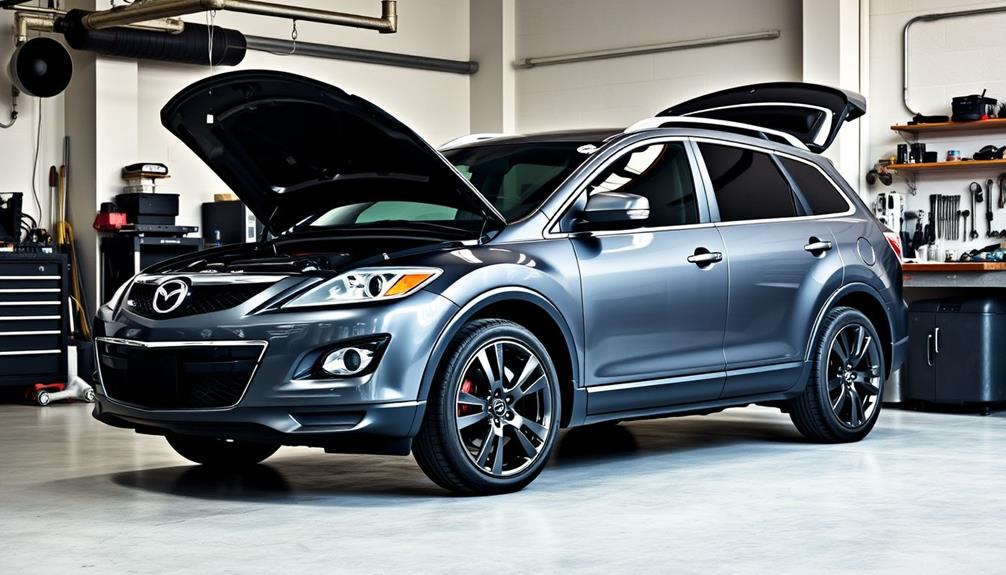
Maintaining your 2008 Mazda CX-9 is key to maximizing its performance, especially after making modifications. Regular oil changes using the recommended weights of 0W20 or 5W30 are essential for keeping your engine running smoothly. Neglecting this critical task can lead to diminished performance and costly repairs down the line.
Equally important is monitoring fluid levels, including coolant, to prevent overheating or engine damage. Confirming that your exhaust system is free from blockages can also enhance power and efficiency, making periodic checks a smart move.
Don't forget about the steering wheel; routine inspections of brakes and wheels are crucial for safety and ideal handling, particularly after upgrades. You want to make certain everything works well together.
Lastly, keeping your engine in healthy condition before pursuing further performance upgrades is essential. Make sure there are no error codes in the OBD2 memory, as this directly impacts modification effectiveness.
Fuel Choices for Enhanced Efficiency
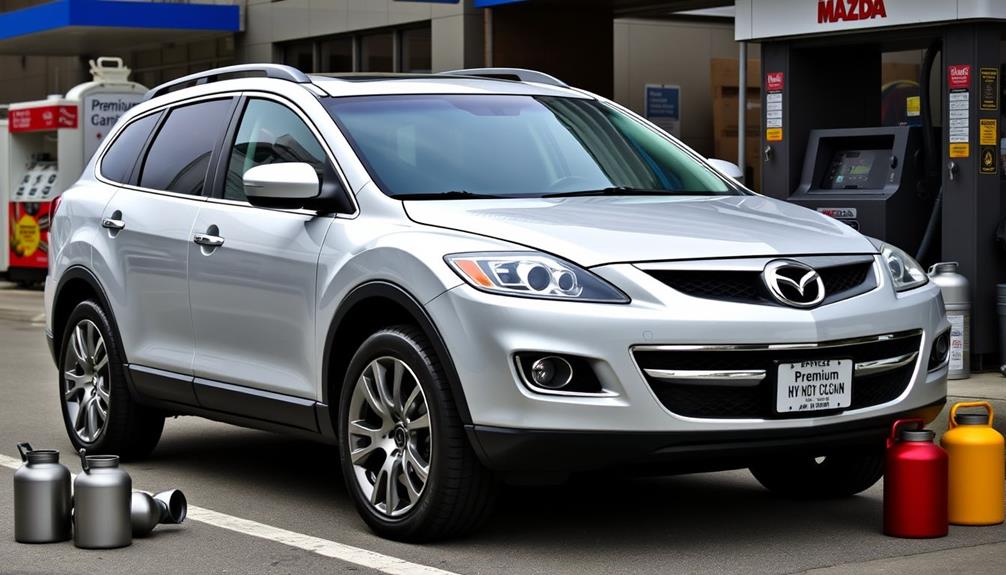
When it comes to boosting your Mazda CX-9's efficiency, choosing the right fuel is key.
Ethanol-free 91 octane can enhance both power and mileage, giving you a notable edge over ethanol-blend options.
It's worth considering how octane ratings and fuel strategies can impact your driving experience and overall performance.
Ethanol-Free Fuel Benefits
Choosing ethanol-free fuel for your 2008 Mazda CX-9 can substantially boost your vehicle's power and fuel efficiency. Ethanol-free 91 octane fuel offers advantages over ethanol-blend fuels like E10, potentially providing an additional 0.5 MPG. This improvement can make a noticeable difference in your daily driving experience.
Here's a quick comparison of fuel options:
| Fuel Type | Benefits |
|---|---|
| Ethanol-Free 91 | Enhanced power and fuel economy |
| Ethanol-Blend (E10) | Limited mileage benefits |
| Higher Octane | Improved engine performance |
| Availability | Varies by state regulations |
While modern vehicles like the CX-9 are built to handle ethanol, using ethanol-free fuel can help you avoid potential negative effects on fuel economy, especially under certain driving conditions. Despite the possible higher cost of ethanol-free gasoline, the benefits you gain regarding performance and efficiency can make it a worthwhile investment. Be sure to research local options to find ethanol-free fuel that suits your Mazda's needs and enjoy the enhanced driving experience it brings!
Octane Ratings Explained
Understanding octane ratings is vital for maximizing the performance of your 2008 Mazda CX-9. Octane ratings measure a fuel's ability to resist engine knocking, which is particularly important for high-compression engines like the CX-9's 3.7-liter V6. For ideal performance, aim for fuels with an octane rating of 87 or higher. Using lower grades can lead to knocking and reduce your SUV's efficiency.
Ethanol-blend fuels, commonly found in many areas, are designed to work with modern vehicles. However, they often contain a higher percentage of ethanol, which can diminish mileage benefits compared to ethanol-free options. In fact, using ethanol-free 91 octane fuel can enhance both power and efficiency, potentially providing an additional 0.5 MPG.
Keep in mind that the availability of ethanol-free gasoline varies by state regulations, and it may come at a higher price than standard E10 blends. As a result, consider your budget when choosing your fuel.
Ultimately, selecting the right fuel based on its octane rating can greatly influence your Mazda CX-9's performance and longevity, making this choice vital for any owner looking to enhance their SUV experience.
Fuel Efficiency Strategies
To consistently boost fuel efficiency in your 2008 Mazda CX-9, selecting the right fuel is crucial. Using ethanol-free 91 octane fuel can enhance both power and efficiency, potentially improving real-world MPG by up to 0.5 MPG compared to standard ethanol-blend fuels.
While ethanol-blend fuels might be more common, they often don't provide considerable mileage improvements and may lower performance, especially in older models like yours.
Before filling up, check the availability and pricing of ethanol-free gasoline in your area, as this can vary greatly by state.
Alongside choosing the right fuel, adopting efficient driving habits can further enhance fuel efficiency. Utilizing cruise control on highways helps maintain a steady speed, which can contribute positively to your overall MPG.
Regular maintenance also plays an important role in optimizing fuel efficiency. Keep an eye on your engine health and adhere to the recommended oil weights (0W20 or 5W30) to guarantee your SUV operates at its best.
Frequently Asked Questions
Can You Tune a Mazda Cx-9?
Yes, you can tune a Mazda CX-9. Consider modifications like ECU remapping or upgrading the intake and exhaust systems. Just make sure your engine's in good shape before diving into any tuning project for ideal results.
How to Boost Mazda Cx-9?
Think of your Mazda as a tired lion; it needs a boost. Install a cat-back exhaust, upgrade the air intake, and tune the ECU. Regular maintenance keeps the engine roaring strong and efficient.
How Many Miles Will a 2008 Mazda CX-9 Last?
Your 2008 Mazda CX-9 can last around 200,000 miles with proper maintenance. Regular oil changes and fluid checks are essential for maximizing its lifespan, ensuring reliability, and maintaining performance well beyond that mileage if cared for correctly.
What Does Sport Mode Do in a Mazda Cx-9?
When you engage sport mode in your Mazda CX-9, it enhances throttle response and adjusts transmission shift points for quicker acceleration. This creates a more dynamic driving experience, though it may reduce fuel efficiency.
Conclusion
By tuning your 2008 Mazda CX-9, you’re not just enhancing its performance; you’re releasing a new domain of driving pleasure, much like finding a hidden treasure on a familiar map. With the right modifications and maintenance, your SUV can become a powerhouse that handles both power and efficiency with ease. So, embrace the journey ahead, and let your CX-9 transform into the beast you’ve always dreamed of, turning every drive into an adventure worth savoring. With the right combination of upgrades and the meticulous attention to detail that comes with Mazda CX30 tuning, you can elevate your driving experience to new heights. Imagine the thrill of accelerating down the open road, feeling the raw power and precision of your finely-tuned CX-9. Embrace the potential of your SUV and unlock its true performance capabilities with the art of Mazda CX30 tuning.
